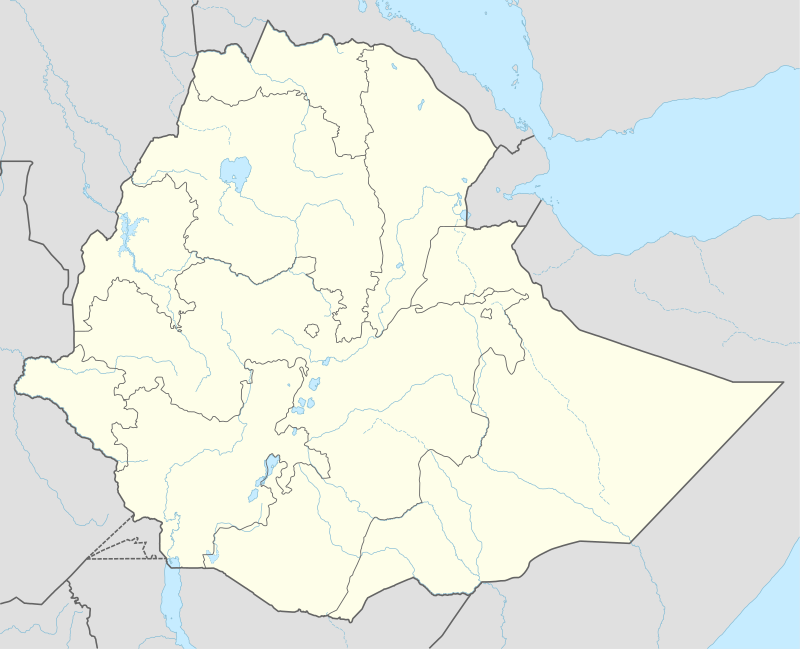Agaro
Agaro (or Haggaro) is a town and separate woreda in south-western Ethiopia. Located in the Jimma Zone of the Oromia Region, it sits at a latitude and longitude of 7°51′N 36°35′E, and an elevation of 1560 meters above sea level.[1]
Agaro | |
|---|---|
Town | |
 Agaro Location within Ethiopia | |
| Coordinates: 7°51′N 36°35′E | |
| Country | Ethiopia |
| Region | Oromia |
| Zone | Jimma |
| Elevation | 1,560 m (5,120 ft) |
| Population (2007) | |
| • Total | 25,458 |
| Time zone | UTC+3 (EAT) |
| Climate | Aw |
Overview
The road that originally connected Agaro to Jimma was "better known for its depth than for its length" until improvements were completed in 1962. The road to Bedele, 96 km long, was completed in 1968 at a cost of 12 million dollars (Ethiopian), by the French company Razel Frères. Agaro is one of the most important trading centers of coffee in Ethiopia.[2] The Jimma Institute of Public Health (part of Jimma University) operates a teaching center for health care in Agaro.[3]
Agaro was the capital of the former Kingdom of Gomma, until Gomma was conquered by Dejazmach Besha Abuye in 1886. By 1958, the settlement was one of 27 places in Ethiopia ranked as a First Class Township. Fitawrari Gebre Kristos, started coffee plantations in the 1950s on land he inherited from his grandfather Fitawrari Wossen. Fitawrari Besha could employ up to 400 workers during high harvest season. After the Ethiopian revolution, Gebre Kristos abandoned his plantation and retired to Addis Ababa; his plantation was nationalized by the Land Nationalization Proclamation of March 1975.[2]
In term of school and education the town have some elementary, senior, secondary and preparatory schools. Agaro secondary and preparatory school is one of the oldest secondary and preparatory school in the town.
Demographics
The 2007 national census reported a total population for this woreda of 25,458, of whom 12,946 were men and 12,512 were women. The majority of the inhabitants were Muslim, with 60.7% of the population reporting they observed this belief, while 33.76% of the population said they practised Ethiopian Orthodox Christianity, and 5.04% were Protestant.[4]
The 1994 census reported this town had a total population of 23,246 of whom 11,687 were men and 11,559 were women.
Notes
- According to its weather station, as provided at Climate Explorer: Found Station data. (Royal Netherlands Meteorological Institute website, accessed 14 July 2007)
- "Local History in Ethiopia" (pdf) The Nordic Africa Institute website (accessed 16 November 2007)
- Directory of Potential Institutions for Testing Malaria Vaccines Archived 2005-01-17 at the Wayback Machine, Secretariat, African Malaria Vaccine Testing Network (Dar es Salaam, 2004), p. 37
- 2007 Population and Housing Census of Ethiopia: Results for Oromia Region, Vol. 1 Archived November 13, 2011, at the Wayback Machine, Tables 2.1, 2.5, 3.4 (accessed 13 January 2012)